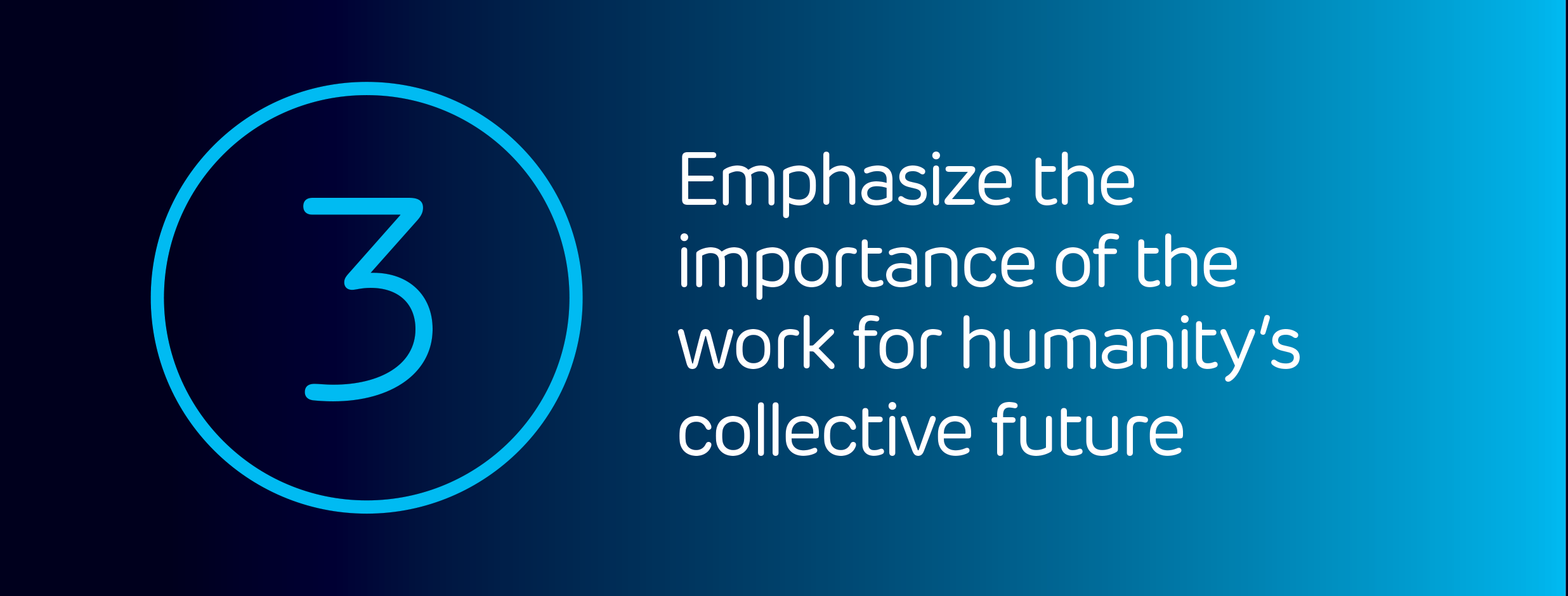Stay Up to Date
Submit your email address to receive the latest industry and Aerospace America news.
Recruiting and hiring skilled engineering workers has become a mission-critical challenge for NASA, an agency of 18,000 employees. An internal review last year of development of the Psyche asteroid probe, now scheduled for launch this month, attributed the project’s one-year delay and cost increases partly to workforce shortages. The review concluded that the problem existed not only at the Jet Propulsion Laboratory in California, where Psyche was built, but also at other of the agency’s 10 field centers.
In recent years, NASA’s average attrition, meaning the percentage of workers who leave the agency, has been around 6% annually, the agency’s acting chief human capital officer told me in a statement. About half of that comes from retirements, meaning the workers who’ve spent their careers there are quickly aging out. NASA is top heavy with older employees too: Nearly 40% of the agency’s science and engineering workers are age 55 and older, according to the April report, “NASA’s Efforts to Increase Diversity in its Workforce,” from the NASA Office of Inspector General. These expected retirements could exacerbate the workforce issue. Meanwhile, skilled younger workers are leaving jobs to seek higher pay, better career opportunities, faster advancement and more flexible work hours and policies, according to my interviews with former agency managers and analysts who survey the aerospace and defense industries.
I spoke with experts who shared five tips for NASA as it addresses its workforce woes. — Theresa Foley

NASA knows it can do better on this. “Despite support from Agency leaders and multiple initiatives to increase diversity, we found NASA has made little progress in increasing the representation of women and minorities in its civilian workforce or leadership ranks. Specifically, over the past decade NASA’s overall workforce demographics have stayed roughly the same, with small increases (1 or 2 percent) for some groups,” NASA’s Office of Inspector General said in an April report, “NASA’s Efforts to Increase Diversity in Its Workforce.” NASA centers made “few gains” in increasing minority representation overall and few gains in elevating women, racial and ethnic minorities to senior job levels, according to the IG. The proportion of veterans hired declined from 28% in 2015 to 13% in 2021.
The U.S. space sector has a history of being managed by and employing predominantly white males. It is less diverse than industry overall, according to London-based consultancy Ernst and Young. Lori Garver, former deputy NASA administrator, says women are a “vast untapped resource” who can help solve the engineering and technology shortages and inequities that are hampering the space program.
Within the sector as a whole, people of color and women are underrepresented in management and executive positions compared to national demographics. While white men are 30% of the national workforce, they occupy 60-80% of defense and aerospace management jobs. The reason, says Bird Guess, president and CEO of the Racial Equity Group consultancy in Irving, Texas, is because casual recruiting is done largely from social and professional networks, which as a general rule, remain segregated.
“White men play golf or cards together, for example, and share job leads among their networked acquaintances.” He says this is not racism, but a result of how racism segregated society and created social structures that today continue to produce and sustain racial inequities.
Attracting a diverse workforce has long been recognized as important and hard to do, says Alan Ladwig, who retired in 2013 as NASA deputy associate administrator for public outreach in the agency’s Office of Communications. Commercial space enterprises have the same problem, he adds, pointing out that official team photos for specific projects often include very few faces of color or genders other than white males.
Another way to improve DEI scores would be to change job requirements to focus less on advanced degrees and more on experience or other qualifications. Many talented people cannot afford master’s degrees, Guess says.

Being able to work remotely is seen by NASA as a strong attractor for young people. “With the growing space economy, we anticipate needing to become more adept at recruiting mid-career talent,” said Kelly Elliott, NASA’s acting chief human capital officer, in written answers to questions submitted to her office. “The hybrid work environment is helping us to be much more competitive in areas like California with high salaries or long commutes.”
The agency does allow remote work, following general guidelines from the U.S. Office of Personnel Management that workers must be on site for two days of every two weeks. But at the NASA-funded Jet Propulsion Lab, where remote work and other issues were blamed for the yearlong delay to the asteroid mission Psyche, a more strict policy was imposed in January. Workers must be on site at JPL for three days of every week.
Working from home is, of course, not always optimal at an agency that oversees construction of rockets and satellites and conducts research and development in labs and wind tunnels. Aside from that, being in the same room with one’s team members has historically been viewed at NASA as a key to building trust. And without trust, it is much more difficult to raise a problem or criticism with a project, according to Al Diaz, a former director of NASA’s Goddard Space Flight Center in Maryland.
Alan Ladwig, who retired from NASA in 2013, says he visited NASA Headquarters in June and several times before, wondering if the beneficial “hallway talk” phenomenon had resumed. He observed that “it’s like a ghost town” with so many remote workers.
“There’s no soul here.”

Younger workers, and not just at NASA, are more purpose-driven than their older peers, according to the 2022 Aerospace and Defense Workforce Study conducted by Ernst and Young, a multinational consultancy based in London, with the Aerospace Industries Association and AIAA.
“What we’re hearing is more of a focus on the purpose of the organization,” says Steve Fuller, a partner at Ernst and Young and lead author of the study. “Why do you exist? And it’s not just to do missions. In this case, it’s the greater good that you’re bringing into the world.”
Building and maintaining an adequate workforce is “a burning problem” for NASA and aerospace companies, Fuller says, and NASA may have an advantage over some sectors. In fact, from 2012 to 2022, the agency was ranked as the best place to work in the federal government, in annual surveys of federal workers. The results of the next survey by the Office of Personnel Management are scheduled to be released in early 2024.
“NASA employees work on meaningful projects that will make an enduring impact on humanity from landing the next woman and person of color on the Moon to understanding climate change here on our home planet,” Kelly Elliott, NASA’s acting chief human capital officer, said in a prepared statement. “Our work is more than just a profession—it’s a passion and a lifelong dream.”

Alan Ladwig, a retired NASA manager, says younger new hires want to move quickly up the ladder at the agency, something traditionally not done. Space employers used to operate on a slow-track principle for advancement to better jobs. In the 1980s, NASA was still being run by veterans from the Apollo era who had started their careers in their 20s, Ladwig recalls. As a young NASA manager on the fast track for more responsibilities at headquarters, Ladwig remembers an older senior executive commenting, “I think we may have brought Ladwig along too quickly.” Ladwig’s response: “What were you saving me for?”
That approach — requiring workers to pay their dues by working decades on a single project or in a single discipline — is outmoded, says Steve Fuller of London-based consultancy Ernst and Young. NASA is taking a risk if it is counting on the next generation to make a 15-year commitment to a job.
“They are more comfortable with moving around among roles, and more curious and aware of their other opportunities,” explains Fuller.
Generally speaking, members of the upcoming generation are more interested in having career experiences that can be listed in a portfolio, rather than a job that has lasted a long time, says Raman Ram, Ernst and Young’s leader for the aerospace and defense sector in the Americas.
“Instead of just having the same role for 15 years on one program or project, how can I move around and get different experiences and create a real portfolio that you’re excited about?” Ram says. “One that is marketable and that is going to help you to progress in your career. And that portfolio is made up of experiences.”
While leadership skills are often more closely associated with senior managers, the leadership of middle managers and first-line managers carries more weight in retaining talent, according to the Ernst and Young report, “2022 Aerospace and Defense Workforce Study.” The ideal new worker will have great digital skills and deep technical knowledge as more workplaces become focused on automation.
Throughout the industry, many managers are shifting toward offering programs focused on mental well-being, leadership and creative ways to obtain technical degrees, the 2022 workforce study says. Additionally, companies are looking for ways to provide more employee recognition, better compensation and flexible work arrangements.
JPL has put some of that into practice. Director Laurie Leshin said at a June press conference that she and her team were able to quickly turn Psyche from delays and poor management to a mission in which they have tremendous pride. The team is complete and was given better pay, improved benefits, stronger leadership, increased internal communications and more outreach.

One way to close the gap would be to create skill sets so that people can move seamlessly among contracts, projects or roles. At JPL and NASA centers, many programs are 10-year-plus, multibillion-dollar efforts to build one special piece of hardware, rather than consisting of production line work. The need to keep experienced engineers for years or decades can conflict with the typical Gen Z desire to change jobs every few months for more money.
“Design knowledge capture” is a process to keep the expertise in the system for decades even if the faces of the workers change. “Either the same people need to be there, or design knowledge must be there so lessons aren’t lost,” says Al Diaz, a former director of NASA’s Goddard Space Flight Center in Maryland. Mentoring and reverse mentoring, in which a younger worker assists an older one in learning new technology, are among the methods for sharing information generationally in areas such as data analytics. To retain employees, Ernst and Young’s report suggests “reskilling” the workforce for five areas that will be increasingly important in the future: leadership, cybersecurity, data science and analytics, engineering skills and digital skills.
This leaves the space industry, including NASA, with an urgent need to reshape its workforce and policies to better compete for a limited talent pool of engineers and digital analysts.
About Theresa Foley
Theresa is a Florida-based journalist focused on the space industry. She was the founding editor of Space News.
Related Posts
Stay Up to Date
Submit your email address to receive the latest industry and Aerospace America news.




